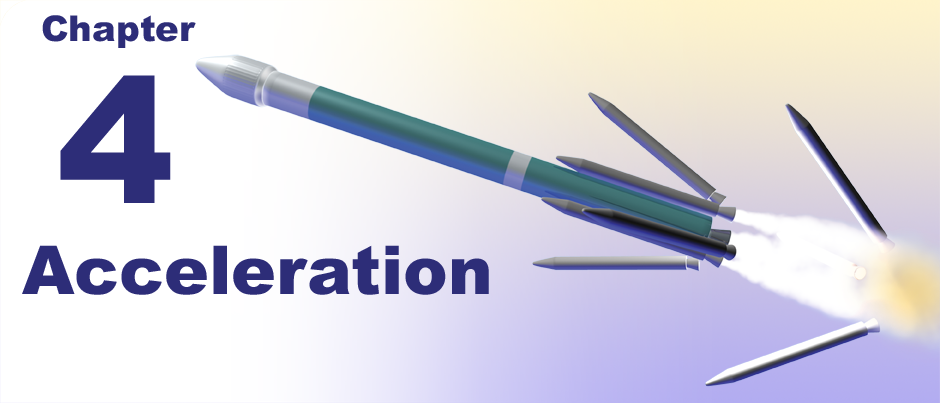 |
The stuff of legend, g-forces are endured by fighter pilots, astronauts, and roller-coaster riders. In a sense, however, they should be called g-accelerations. Acceleration is simply the rate at which your velocity changes. What does that feel like, and what can it do to you? 
|
 When described by car salespeople, acceleration is described in terms such as “zero to sixty [mph] in seven seconds.” But “g’s” are a better measure. After all, when you drop a heavy book, the quantity g tells us how quickly it speeds up. And “g’s” tell us how heavy we feel—whether due to gravity or from being pressed against the seat in a fighter jet dodging enemy fire. At 2g we feel twice as heavy as normal; at 10g we feel ten times that force—enough to make many people lose consciousness. (In fact, g-forces first came to widespread attention because numerous WW I pilots passed out during dogfights.)
When described by car salespeople, acceleration is described in terms such as “zero to sixty [mph] in seven seconds.” But “g’s” are a better measure. After all, when you drop a heavy book, the quantity g tells us how quickly it speeds up. And “g’s” tell us how heavy we feel—whether due to gravity or from being pressed against the seat in a fighter jet dodging enemy fire. At 2g we feel twice as heavy as normal; at 10g we feel ten times that force—enough to make many people lose consciousness. (In fact, g-forces first came to widespread attention because numerous WW I pilots passed out during dogfights.) 
|
The term “g-force” usually makes one think of space travel, because an astronaut must achieve orbital speed within minutes of takeoff. In the 1950s and 1960s, U.S. astronaut candidates had to ride the Johnsville Centrifuge: a small metal capsule at the end of a 50 ft (15 m) rotor. Candidates briefly endured accelerations as great as 30g—similar to the sudden velocity change that you might experience in a car crash without an air bag. Requirements were stringent: Astronauts in the U.S. Mercury program would have to endure roughly 8g during takeoff and re-entry. Many capable pilots who had a history of heart trouble failed to qualify for space flight. 
|
 By contrast, Space Shuttle astronauts barely exceeded 2g during their missions. Your head accelerates more rapidly when you sneeze (about 3g), and your body undergoes the occasional 3g or 4g acceleration when you ride a typical roller-coaster. Sneezes and roller-coaster turns, however, are very short events. We still don’t know how people will respond after exposure to even a few “g’s” over the long time periods that interplanetary space travel would require.
By contrast, Space Shuttle astronauts barely exceeded 2g during their missions. Your head accelerates more rapidly when you sneeze (about 3g), and your body undergoes the occasional 3g or 4g acceleration when you ride a typical roller-coaster. Sneezes and roller-coaster turns, however, are very short events. We still don’t know how people will respond after exposure to even a few “g’s” over the long time periods that interplanetary space travel would require. 
|
| |
|

